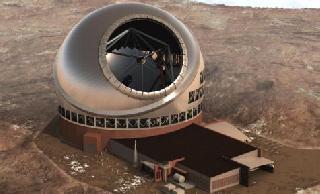
WASHINGTON (PTI): Alien planets are incredibly common in our own galaxy Milky Way and it may be having as many as 160 billion planets, a six-year-long study has suggested.
According to the study, published in the journal Nature, there are over 100 billion stars in our galaxy and each of them hosts at least 1.6 planets on average, bringing the number of likely alien worlds to more than 160 billion.
And large numbers of these exoplanets are likely to be small and rocky, roughly like Earth, since low-mass planets appear to be much more abundant than large ones, it claimed.
"This statistical study tells us that planets around stars are the rule, rather than the exception," said study author Arnaud Cassan of the Paris Institute of Astrophysics.
"From now on, we should see our galaxy populated not only with billions of bright stars, but imagine them surrounded by as many hidden extrasolar worlds," Cassan told SPACE.com.
Till date, astronomers have discovered over 700 planets beyond our own solar system, with 2,300 "candidates" found by NASA's Kepler space telescope awaiting confirmation.
In the new study, the researchers looked at data gathered by a variety of Earth-based telescopes, which scanned millions of stars from 2002 to 2007 for microlensing events.
The team closely analysed about 40 of these events and discovered that three betrayed the presence of an alien planet around a star. One of these planets is a bit more massive than Jupiter, one is comparable to Neptune and the third is a so-called "super-Earth" with a mass about five times that of our home planet.
Considering how perfectly aligned multiple bodies must be to yield an exoplanet detection via microlensing, that's a pretty impressive haul, researchers said.
The astronomers used all of this data and information about seven additional planets detected by other microlensing efforts, to put a number on their planet-detection efficiency -- and, by extension, the number of alien worlds that may populate the Milky Way.
The team determined that about one-sixth of our galaxy's stars harbour Jupiter-mass planets, half have Neptune-like worlds, and nearly two-thirds host super-Earths.
And that's just in the stretch of orbital space from 0.5 to 10 astronomical units -- distance from Earth to the Sun -- from each star, the limit of the study's sensitivity.
"Moreover, we confirm that low-mass planets, such as super-Earths (up to 10 Earths) and Neptune-like planets are much more abundant than giant planets such as Saturn and Jupiter (with estimates that there are six to seven times more low-mass than giant planets)," Cassan said.
Further, according to the researchers' calculations, every planet in the Milky Way harbours an average of 1.6 planets in the 0.5-10 AU range, which in our solar system corresponds roughly to the swath of space between Venus and Saturn.
Since astronomers estimate that our galaxy contains about 100 billion stars, that works out to at least 160 billion alien planets.
However, the true number of alien worlds may be quite a bit larger than 160 billion, as some planets hug their host stars more closely than 0.5 AU, and others are more far-flung than 10 AU. And a great many likely have no host star at all, the researchers added.
 Previous Article
Previous Article Next Article
Next Article












The Indian Air Force, in its flight trials evaluation report submitted before the Defence Ministry l..
view articleAn insight into the Medium Multi-Role Combat Aircraft competition...
view articleSky enthusiasts can now spot the International Space Station (ISS) commanded by Indian-American astr..
view article